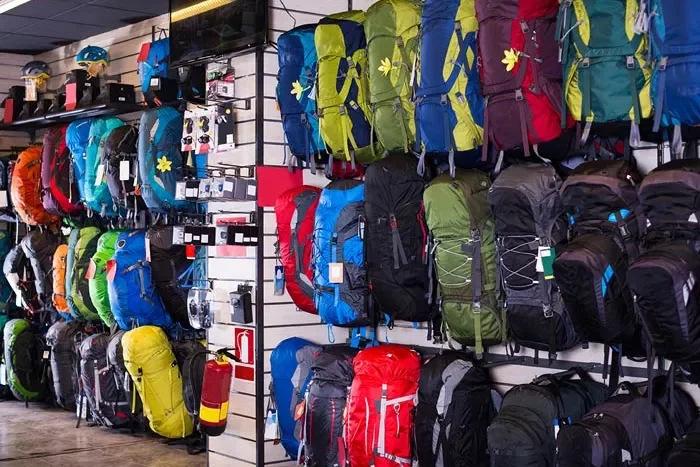Every trip into the wilderness, whether near or far from home, requires a different set of essentials, and those essentials should be carried in a pack best suited for the excursion. In the outdoors, a hiking backpack is your best friend, but navigating through the abundance of brands, sizes, colors and different bells and whistles can be a challenge for any buyer.

- Function: “What do I primarily want to use this hiking backpack for?”
- Fit: “What brand and backpack size fit my body the best?”
- Features: “What features correlate to necessary functions?”
Function: “What do I primarily want to use this hiking backpack for?”
This is the most important question to ask yourself before you purchase a pack. Think about whether you want a pack for day hikes or for multiday trips (or maybe a little bit of both). Do you need a pack for a specialized purpose, such as climbing or backcountry skiing? Before you head to the retail store, know the answers to these questions!
Backroads Pro Tip
Do research on your desired pack volume, level of durability, carrying capacity and brand offerings prior to visiting a retail store. Hunting for hiking backpacks can be overwhelming, but this research will give you a head start.
Fit: “What brand and backpack size fit my body the best?”
High-end backpacks come in sizes, but it’s good to remember that all brands fit people differently. Find what works for you with these three simple steps.
Step 1: Determine your torso length. Go to a local retailer, and talk to a sales associate. The first thing that person will do is help you accurately determine your torso length. Just like with shirt sizes, you can be anything from an extra small to an extra large, and knowing this size will allow you to try on hiking backpacks designed to fit someone of your height.
Backroads Pro Tip
Choosing the right size allows the pack to properly distribute most of the weight to your hips—not just your shoulders.
Step 2: Try various brands, and don’t look at price…yet. Once at the retailer, narrow down your choices to hiking backpacks that fit your body shape. Comfort and the right fit should be your top priorities—not color, brand or fancy features. When you’re several miles into your hike, comfort is all that’s going to matter.
Step 3: Once you’ve narrowed your options down, put weight in the potential hiking packs, and spend some time wearing them. Typically a good outdoor retailer will have pack weights. This allows you to load up each potential pack so you can take it for a test walk around the store. This is a crucial step! Wearing a weighted pack is the only way to truly test how a backpack will feel on the trail. Spend as much time with it on as you need.
Features: “What features correlate to necessary functions?”
Ask yourself what features you need in a pack—not necessarily the features you want (specific color or other bells and whistles). For example, do you need a pack with lots of storage space or a lot of compartment options? Do you need a pack that is avalanche airbag compatible or just one that can carry skis? Do you need a pack with water bottle pockets or just a bladder compartment?
Three features Backroads trip leaders love are large water bottle pockets, exterior stash pockets and top accessibility. If you don’t use a bladder-style hydration system (like Platypus or CamelBak), large water bottle pockets give you easy access to your water—without having to take your pack off while you’re on the move. The exterior stash pockets give you quick access to snacks, a camera or rain gear, and this allows the inside of your pack to stay much more organized. Last but not least, if you want to maximize carrying capacity, having a top-loading single-compartment backpack with a top lid is a great way to get a lot into a relatively modest amount of space.
The Osprey Talon 33 is Backroads’s pick for one of the best hiking backpacks on the market because of its functional design, versatility (as either a large daypack or a weekender pack) and lifetime guarantee.
Backroads Pro Tip
Remember, when it comes to hiking backpacks, focus on what you need, not what you want.



